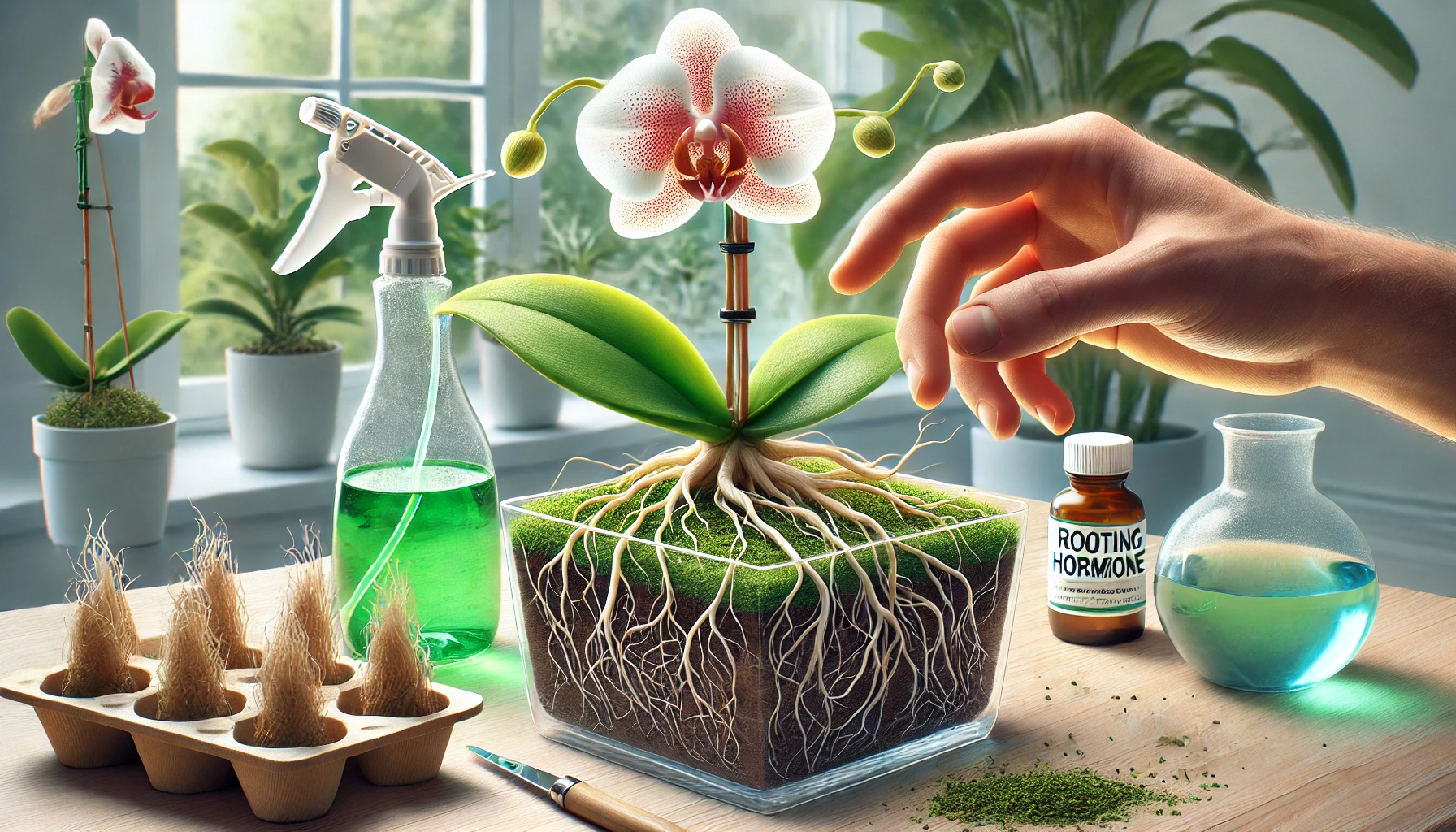Orchid roots are essential for absorbing water, nutrients, and anchoring the plant. If your orchid has lost its roots due to overwatering, dehydration, or disease, it may struggle to grow properly and eventually decline. However, with the right techniques, you can stimulate new root growth and help your orchid recover.
🌱 Why Are Orchid Roots Important?
Unlike typical houseplants, orchids do not grow in soil. Their roots are aerial, meaning they absorb moisture and oxygen from the air. In their natural habitat, orchids cling to trees, using their roots to extract nutrients from rain and organic matter.
✔ Healthy orchid roots should be:
- Firm and plump
- Green when moist and silvery-white when dry
- Growing actively, producing new root tips
❌ Unhealthy roots may be:
- Brown, mushy, or black (a sign of root rot from overwatering)
- Thin, dry, and brittle (caused by dehydration)
- Lacking new growth (due to poor nutrients or improper environment)
💡 If your orchid has few or no healthy roots, it’s crucial to take action quickly to encourage new root growth!
🌿 Causes of Root Loss in Orchids
Orchid roots can die off for several reasons, but understanding the cause is the first step toward helping your plant recover.
💧 Overwatering and Root Rot
✔ Caused by excessive moisture, leading to black, mushy roots.
✔ Prevent it by using well-draining orchid bark and watering only when roots turn silvery-white.
🔥 Underwatering and Dehydration
✔ Leads to shrinking, dry, and brittle roots that fail to absorb nutrients.
✔ Prevent it by maintaining consistent moisture levels and increasing humidity if necessary.
🦠 Fungal or Bacterial Infections
✔ Often occur when moisture is trapped around the roots or in the potting mix.
✔ Prevent it by improving air circulation and using a sterile, fresh potting mix.
🏺 Old, Compact Potting Medium
✔ Over time, bark and moss break down, reducing aeration and drainage.
✔ Prevent it by repotting your orchid every 1–2 years in fresh orchid mix.
🛠 How to Stimulate New Root Growth in Orchids
If your orchid has lost many of its roots, you can encourage new ones to grow using proper hydration, repotting, and root-boosting techniques.
🌡 Step 1: Create the Ideal Environment for Root Growth
✔ Keep the orchid in bright, indirect light (avoid direct sun).
✔ Maintain a warm temperature (65–75°F or 18–24°C).
✔ Increase humidity to 50–70% using a humidity tray or misting the air (not the plant directly).
💧 Step 2: Hydrate Without Overwatering
✔ If roots are severely dry, soak the plant in lukewarm water for 10–15 minutes.
✔ Mist the aerial roots lightly every few days if the air is very dry.
✔ Always let excess water drain to prevent rot.
🏺 Step 3: Repot the Orchid in the Right Medium
✔ If the old potting mix is breaking down, repot in fresh bark mix or sphagnum moss.
✔ Use a clear plastic pot with drainage holes to monitor root growth.
✔ Position the orchid so the base of the plant is just above the medium, allowing room for new roots to grow.
🌱 Step 4: Apply a Root Growth Stimulant
✔ Use a rooting hormone (such as seaweed extract or orchid-specific root boosters) to encourage new growth.
✔ Soak the orchid’s base in a diluted rooting solution before repotting.
✔ Lightly mist roots with a weak orchid fertilizer (20-20-20) once a week to promote growth.
🌿 Step 5: The Sphag-and-Bag Method (For Severe Root Loss)
If your orchid has almost no roots left, try the sphag-and-bag method to create a high-humidity environment that encourages new root development.
1️⃣ Place slightly damp sphagnum moss inside a plastic bag or container.
2️⃣ Position the orchid’s base on top of the moss (do not bury it).
3️⃣ Keep the bag partially open for airflow and place it in indirect light.
4️⃣ Check for moisture levels daily and mist lightly if needed.
5️⃣ Within a few weeks to months, new roots should start forming!
❌ Avoid Common Mistakes That Prevent Root Growth
- Overwatering: Can drown and rot new root tips before they grow.
- Using regular potting soil: Smothers roots and prevents aeration.
- Placing in direct sunlight: Can dry out the plant too quickly.
- Fertilizing too soon: New roots are delicate and can be burned by strong fertilizers.
🛡 Final Tips for Encouraging Strong Root Growth
✔ Keep the orchid in a warm, humid environment to stimulate root development.
✔ Use a balanced orchid fertilizer at low strength once roots start growing.
✔ Repot in well-draining bark or moss and provide proper airflow.
✔ Be patient—new root growth can take weeks to months, but consistency is key!
By following these steps, your orchid can recover from root loss and grow strong, healthy roots again, ensuring it thrives and blooms beautifully in the future. 🌿✨
